When Leander Setters died, April 3rd, 1932, and was buried the next day in a small cemetery on Little Marrowbone Creek Road, there was a baby girl who, only six months earlier, had left the womb of Mabel Chapman in Iowa City, Iowa. Mabel and Leander never met. Leander didn’t even know Mabel was pregnant. He didn’t even know that Mabel existed. But that little baby girl, hundreds of miles and many cultures and years, away from Little Marrowbone, would eventually meet Leander’s great-grandson, Jim Robert Setters. And she would play an important role in Setters Lake, the one that was there, as a pond, when Leander bought the property a half century earlier. She really became the first female in the history of the lake to contribute a major hands-on effort to restore it. Before, the lake was nothing but a little ice pond.
At least Leander knew about Jim.; who was born about five years before Leander died and named after Leander’s own son; James From now on, in our story, when we refer to Jim, it will be me, your author, if we are talking about James, we will be referring to my grandfather/Leander’s son NOW, DON’T YOU FORGET THAT! JIM? will be me, your author! JAMES? Will be my grandfather, Leander’s, son!
Jim was one of the three little boys, his great-grandsons, who lived across the gravel road from him. All three had learned to swim in Leander’s Lake, by the time Leander died.
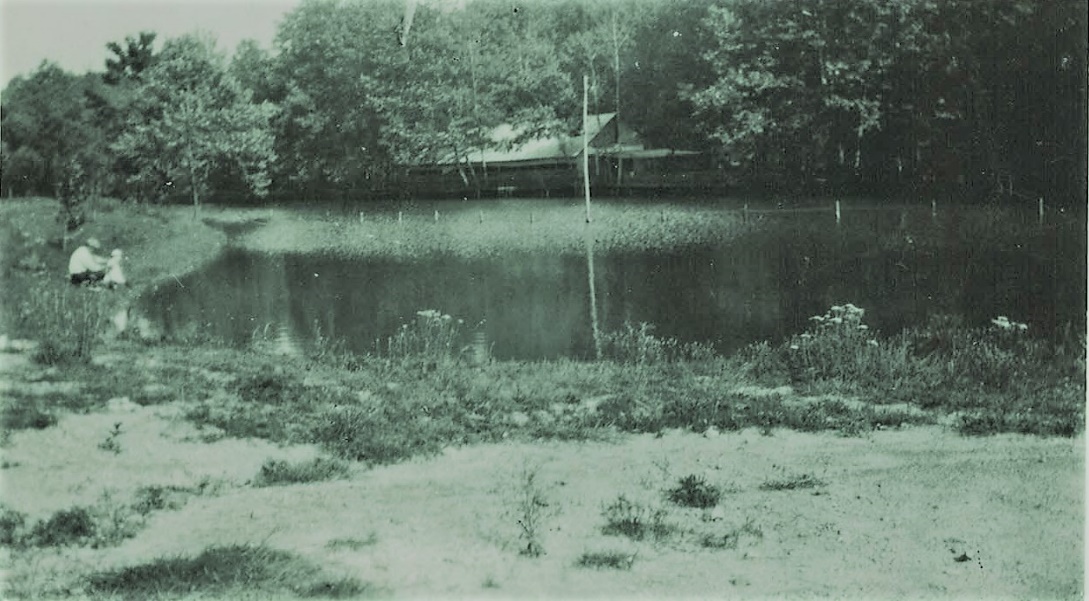 The famous dance hall on the other side, with short poles sticking up out of the water separating the shallow from the deep water, the tall pole in the center with a light bulb or two, powered by a nearby generator. This picture was taken in the summer of 1928.
The famous dance hall on the other side, with short poles sticking up out of the water separating the shallow from the deep water, the tall pole in the center with a light bulb or two, powered by a nearby generator. This picture was taken in the summer of 1928.
The two people beside the still water of the lake, are John Marshall Setters, Leander’s grandson and with him is Jim Setters, John’s son and Leander’s great-grandson. Fifty years later there would have been many changes. Leander and John Marshall will be dead, and Jim would be back. There would be no dance hall and the lake would have deteriorated to a quagmire, a swamp. And Jim and Mabel’s daughter will restore it even better than when this picture was taken.
But there would be no dance hall, no booze, and no John Marshall. Twenty years after Jim was born, John Marshall Setters, his dad, died. Just a week shy of twenty years exactly.
Strange, isn’t it? Things do change.
It was not an easy journey for that little baby girl in Iowa either. She nearly fell through the cracks during the severe depression that had struck our country and, through months of horrible dust storms on the plains.
You would do well to know her story, in fact, let’s call this next phase of our journey, “A Penny Post Card”.
But first, you must meet her mother Mabel, and a few others.
Mabel’s story begins six years before Leander began cleaning out the lake, in 1908.
You are entering into a series of events that will focus primarily on one person, Mabel, others will play important roles, some good, and some bad,
And ONE, very, bad as we follow Mabel’s life. Like a river whose origin begins with just one drop of water, so does this adventure. But we shall join the adventure downstream, much closer to when it blends in with the other events of this story. We must progress one person at a time. We will travel back only about two hundred fifty years. Not a long time at all, if you are having fun. But some about whom you will read, were not having fun. “Far from it”.
If tears become involved, and in this writing, tears do become involved, time can move slowly. Mabel entered this world out in the harsh plains of Kansas on June 12, 1902. Just a few miles away, and a few months later, another little baby girl was born. These two would live for nearly a decade in the same county and not meet until nearly half a century later. But they would meet. For several years they lived, as adults, just a few blocks apart in Wichita, Kansas. They, soon would-be grandmothers to the same two children, and both would play a role in Leander Setters’ Lake. Both would die before they became great-grandmothers, Both. would have three children of their own. Both would have bad experiences with bad husbands. Later on-our story will pursue that other grandmother. Her name was Esther Roberts.
I know, it is not strange for future grandmothers to be born and live in the same county and not meet until two decades later. But, for these two ladies, who were born on the plains of Kansas, to share the same grandchildren, to live five hundred miles away many years later, on the same small plot of ground and have a small lake play a role in their lives? That is a bit unusual.
Don’t you think?
Mabel was born into the family of Jessie and Bessie Rhodes. All total Jessie, and Bessie had nine children. Jessie, whose father, David, survived the horrors of the infamous Confederate Andersonville Prison during the Civil War, was alive because of the twitch of a toe.
Jessie taught at various schools in Kansas and Oklahoma. This new arrival was named Mabel May. Jessie made sure she had a good education and earned a teacher’s certificate. He died in Sumner County Kansas when Mabel was a teen-ager, leaving Bessie with nine children. As a widow.
Bessie and her folks came from Indiana all the way to the Cherokee strip, in Oklahoma by wagon. While living in a sod house on an Indian reservation an Indian chief had offered five ponies for little five-year old red-haired Bessie. Fortunately for this story, he was turned down. And one would suppose that Bessie’s mother kept a sharp eye out when these Native Americans were nearby in the days that followed.
Little is known about Mabel in her teen years except she became engaged to a railroad conductor named Chet Walker. Chet, it appears, was – as were most conductors at that time – out of town a lot.
Remember, the highways as we now know them did not exist nor were there any airlines. The airplane had not even been invented. Railroad was the way to travel if you were going any distance.
Apparently during these absences, Mabel was attracted to a man from an affluent family in Wichita. This fellow, Ernest Leslie Chapman, known as “Les”. Les was divorced and had a son.
While Chet was working on the railroad, Les was working on Mabel. Mabel and Les were married, strangely enough, the day after Christmas, in 1926. Thirty years later Mabel eventually would marry Chet, but that’s another story. We’ll visit that scene later. In the next five years, Les and Mabel would become parents of three children.
Les was already showing signs of not taking on his share of carrying out his responsibilities as a father and a bread winner in Iowa. Les, with Mabel about to give birth to her third child went up there from Wichita. The “about to give birth” quickly changed to “giving birth”. So, on November 11th, 1931, Les and Mabel became parents of Dana Dorothy Chapman.
Leander Setters, six hundred miles away in Nashville, Tennessee was by then on his death bed in what we now call a nursing home, about ten miles from the lake that he had begun cleaning the mud out of twenty years back.
When Leander lay on his death bed though, they were called OLD FOLKS HOMES. Prohibition still gripped the nation and Dana was two years old before the 21st Amendment was passed, ending the nation’s ban on the sale of alcohol. The 21st amendment ended a lot of years of violence, corruption, and several years of making moonshine in the hills and hollows of Little Marrowbone. John Setters, Leander’s grandson and the author’s father. spent thirty days in jail in the mid-thirties, when caught, at one of the stills.
So now we find Mabel, with a husband she probably was beginning to have doubts about, in Iowa City, Iowa with three children. One, just born. The cleaning business didn’t work out and the family moved back to Wichita. Les’ gambling continued, and the family suffered from lack of funds. Mabel remembers one night when Les won a Wichita Cab Company ownership playing poker. A few hands later someone else owned the Cab Company. Les probably had to walk home. Misfortune continued to be with Mabel. Les somehow managed to find a place out in the country, near Wellington, Kansas south of Wichita. First a farmhouse, then a smaller dwelling, and finally a railroad work car located out in a field. It was moved there, first for the storage of hay.
All five of the Chapman family lived in that railroad work car out in a field near Wellington, Kansas At least all five on the rare occasions that Les was home.
Basically, here was Mabel with three young children living in a railroad work car stuck out in the middle of nowhere. What was she to do? The only option she had was to leave Les and go back home to her mother, Bessie. With a broken marriage and not much more than the clothes on their backs she did just that.
One day when Les was gone it is believed one or more of Mabel’s brothers drove down and transported Mabel and the three children to Mulvane, moving in with Bessie in a rented house.
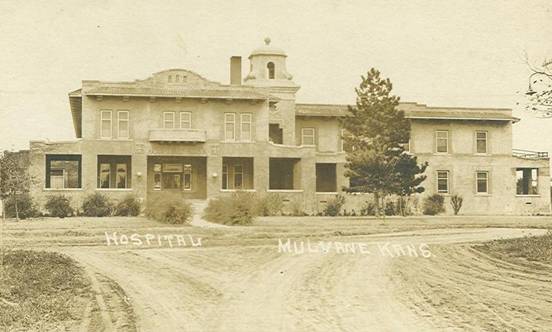 Sante Fe Hospital in Mulvane, Kansas
Sante Fe Hospital in Mulvane, Kansas
Bessie was able to get Mabel a job at the Railroad hospital mending sheets and linen. Mabel also found work at the local grocery store in Mulvane.
She moved up to a better paying job as a seamstress in Wichita at a uniform company. Located on the second floor of a building near downtown the working conditions were similar to what Walmart can’t allow some of their suppliers in China. It was brutally hot, no air-conditioning, and the hours were long. It was brutally hot, no air-conditioning, and the hours were long.
But Mabel had a job that paid more than the hospital.
She was not home with the children during the day. Why not divorce Les? In the early thirties at the beginning of the great depression women had few if any legal rights. Without a strong reason, short of a husband selling one of the children, women had no grounds for divorce. And few were given. And few had the money for legal costs, anyway.
During the separation Mabel had no way to avoid Les coming around to visit the children. And he did. Dana was not yet in school. As school let out for the summer in June of 1936 Les came by the house in Mulvane. Grandma Bessie was in California visiting another daughter at the time, as she did each summer, but even if she were there, it’s doubtful she could have changed the way things turned out.
Mabel’s sister, Lois, was there during the day. When Les said he wanted to take the children for a ride for ice cream she had no choice. He was their father and had all the legal rights of a father. Calling Mabel at work was out of the question. That was never done in those days.
Les drove away with all three. That same week Margaret Mitchell’s great novel, Gone, with the Wind was published. A fitting title for the disappearance of three children in that scorching hot and dusty little town of Mulvane, Kansas.
When Mabel came home, Lois told her what had happened. For about two weeks Mabel went to bed at nights not knowing where her children were. One day Shirley and Bruce walked through the front door at Mulvane. When Mabel asked about Dana, they said Daddy had told them that “you would never see Dana again.”
In Wichita it begins to get hot in June. On the second floor of the Fruehauf uniform-company it was like a sauna. Mabel’s tears could have easily blended in with her perspiration. The weather history for Wichita that summer was the worst ever.
The Dust Bowl of the 1930s on a national scale rank among the most significant events of the century, especially for Kansas. It literally changed the face of the Great Plains. Extreme heat and draught especially in 1934 and 1936. 1934 is the hottest year on record of the United States. 1936 is right behind, and 1936 the family lived in the boxcar made into a crude house with no running water. The only thing that ran in there were the field mice and the two children. Les insisted that Mable move back to the box car. But Mable finally sued for a divorce. Les finally spent time in jail, he would not tell the court what he did with Dana.
The all-time record high temperature of 114 degrees was set on August 12, 1936, at Wichita. This time frame also produced the longest stretch of 100+ degree weather, 20 of them in 1936. However, two other time frames in 1934 produced 100-degree readings for 13 straight days. That 114, degrees, is 14 degrees hotter than the all-time hottest temperature ever recorded in Miami, Florida. Twenty years later, in 1954, this little five-year old girl, as a young mother, would experience another onslaught of extreme emotional heat under extreme circumstances.
Another stretch of 8 days in 1936 experienced temperatures of 100 degrees or higher. As for rain, 1936 was the 9th driest spring with less than four inches. All Spring. It was hot in the entire area. 121 degrees in Alton Kansas, about 150 miles west of Wichita on July 24th. Even Arkansas set records. On August 10th, 1936, Ozark, Arkansas registered 120 degrees. And the plains and southern states were not alone. Temperatures in July of that year rose above 110 degrees in New Jersey, Pennsylvania, Virginia and in Indiana it rose to 116. The summer draught made things even worse. A paltry l.29 inches fell between the months of June through August. “Black Sunday” was near the height of the Dust Bowl, which accounts for the giant clouds of dust descending across Kansas.
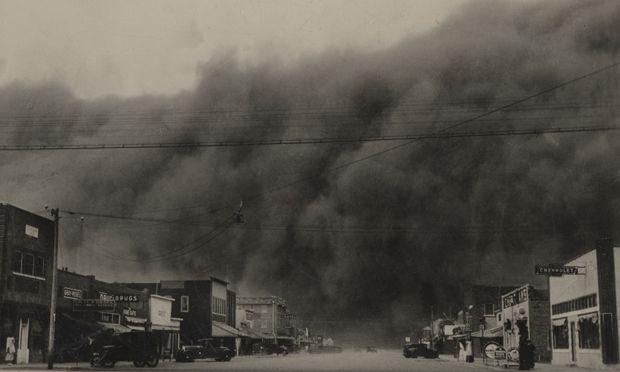
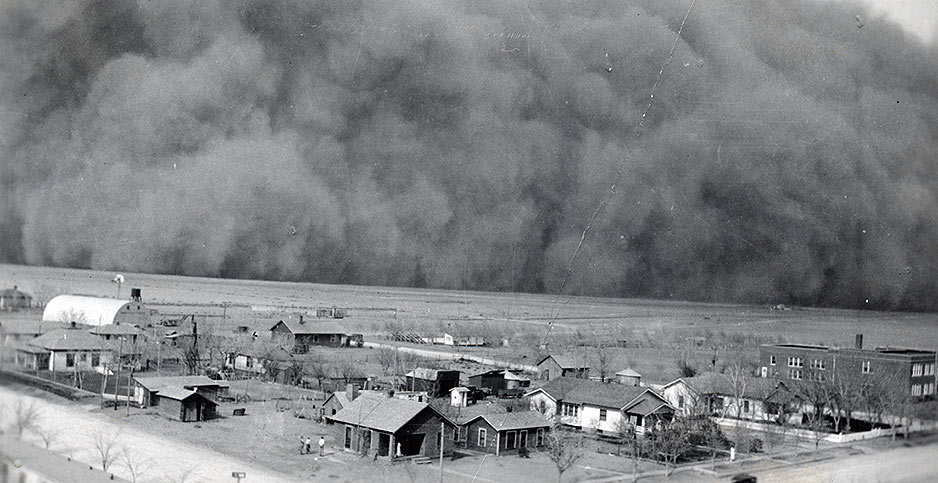
Keep in mind, this is happening during the “great depression” and the hottest and driest conditions ever recorded in Wichita. Carloads of folks were leaving Kansas bound for California or anyplace to get away from the ravages of nature. This was but just one of the many domestic problems facing police. These times were basis for the Hollywood movie, “THE GRAPES OF WRATH” based on the book written by John Steinbeck. We say written in the literal term, because John did it with a lead pencil.
The title was taken from The Battle Hymn of the Republic (Mine eyes have seen the glory of the coming of the Lord/He is trampling out the vintage where the grapes of wrath are stored). Julia Ward Howe wrote the poem in 1861., during the Civil War. It used the tune of “John Brown’s Body”. Mrs. Howe died in 1910, still best known for this one poem. The only good thing that came out of that period was the launching of the career of Hollywood Actor Henry Fonda.
In an interview with his son, Thom Steinbeck, Thom said, “My father despised yellow pencils, it would be black. The whole thing. Top to bottom, from tip to eraser. My father despised yellow pencils. And, it had to have a sharp point. They were surgically sharp. You could dissect a mouse with his pencils.”
Throughout this hot dry summer in 1937 Mabel tried to find her little six- year-old girl. She had to continue working. Jobs were hard to find. She had to provide for her other children. She had no car. The only ones to help her were her brothers who had jobs. So, on weekends they drove her to orphan homes in Central Kansas. They talked to police and sheriff’s offices.
There were no “Human Services” in the thirties, no television screens. No milk cartons for Dana’s face. Milk was still being put in bottles. Even telephones, even if they existed, were scarce. It was easy to fall through the cracks in a society that had simple survival as its highest, and often times, only priority. With old worn-out cars stranded out on the pitiful roads of the area and entire families doing without even the basics of life, the disappearance of one little girl didn’t create even a bump in the road. All during the hot and dry summer of 1937 there were four people who knew exactly where six-year-old Dana was.
Two of them had no idea anyone was looking for her. The third was her father, Ernest Leslie Chapman. He not only knew where Dana was, he also knew why she was there. But he had no intention of telling anyone, especially Mabel. And the fourth one, not really aware of what was going on, was becoming more suspicious every day.
“Les” as his friends referred to him, actually spent several days in jail on two occasions because he wouldn’t even tell the court where Dana was and or what he had done with her; or even if she was still alive.
The desperation that wracked Mabel’s heart, the ache of that heart for her little girl will forever be a mystery because Mabel was never interviewed by anyone. Only mothers will have any idea of the torment Mabel went through.
After many months of desperation Mabel’s hopes were surely weakening.
Finding sympathetic ears in those times was difficult. Only a few years had gone by since the “Orphan Trains” from New York rumbled into that part of the country from. Nearly a quarter of a million orphans had been brought from the streets of New York in hopes of having them adopted.
The trains would pull into a city, prospective parents would look the children over, select what they wanted, and the rest moved on down the line to other cities and towns for “adoption”.
The program of hauling street orphans out into the Midwest had ended just two years before Dana was born. Hardships were easily found.
But finding Dana was not.
In 1937, when Mabel was trying to find her little girl, the man who kidnapped and murdered the son of Charles Lindberg’s baby was electrocuted. People in America were still mourning the loss of their famous comedian/philosopher Will Rogers who was killed in an airplane crash in Alaska a few months earlier. Germany’s Max Schmeling knocked out the new American heavy weight boxing champion, Joe Louis. Another event of the summer in 1936; the Summer Olympics in Berlin where Adolph Hitler was host and Jesse Owens the big star. A lot of effort in the United States to boycott the Olympics to get their teeth into. But a little six-year-old girl in Mulvane, Kansas? Try to find something on that in the local paper. Add the dust bowl, the recent ending of prohibition in the nation, but not in Kansas, and Dana faded into obscurity. But not from the mind of Mabel.
There was a lot for the newspapers in 1937 but little room to report on a six-year-old girl missing in rural Kansas. That was just one of a million domestic problems. Al Capone was stabbed with a pair of scissors in the shower at Alcatraz Prison in June of 1936. Authorities were still looking for those scissors, they were not looking for Dana. Mabel was looking for Dana.
Franklin Roosevelt had just been elected President riding high on his promise to make things better for everybody. He had just dedicated the giant Boulder, now Hoover dam, in Arizona. His theme song Happy Days Are Here Again had just been made into a movie. The tune was played during Roosevelt’s reelection campaign. And that was going on when Mabel was scratching her way through the depression Dustbowl covered plains of Kansas looking for her little daughter.
Try to tell Mabel those happy days were here again. And where was Dana?
Trips in her brothers’ cars to orphanages yielded nothing but one disappointment after another. The lack of telephones, even basic communication was lacking.
“Oh yes, we DO have a new little girl about that age. Let’s go out to the yard and find her.” Each time Mabel’s heart would beat a little faster, then a strange little face. Never, Dana. Then the trip back home. To work the next day. A week later another orphan’s home, another heart break.
There was no “home” delivery of mail in Mulvane. There were individual boxes at the little post office. One day, the basic of all forms of communication; a penny post card, arrived from Oklahoma and was placed into the box at the Mulvane Post Office for Mabel Chapman.
There was a short message written on the postcard; If you have a daughter named Dana, you will find her at (the street address was given) in Oklahoma City. Was it possible that a simple penny postcard, a two-cent investment and just barely more sophisticated than an Indian smoke signal, could end this horrible nightmare? Or would it be just another of those heart-breaking meetings between a distraught mother and a strange little girl?
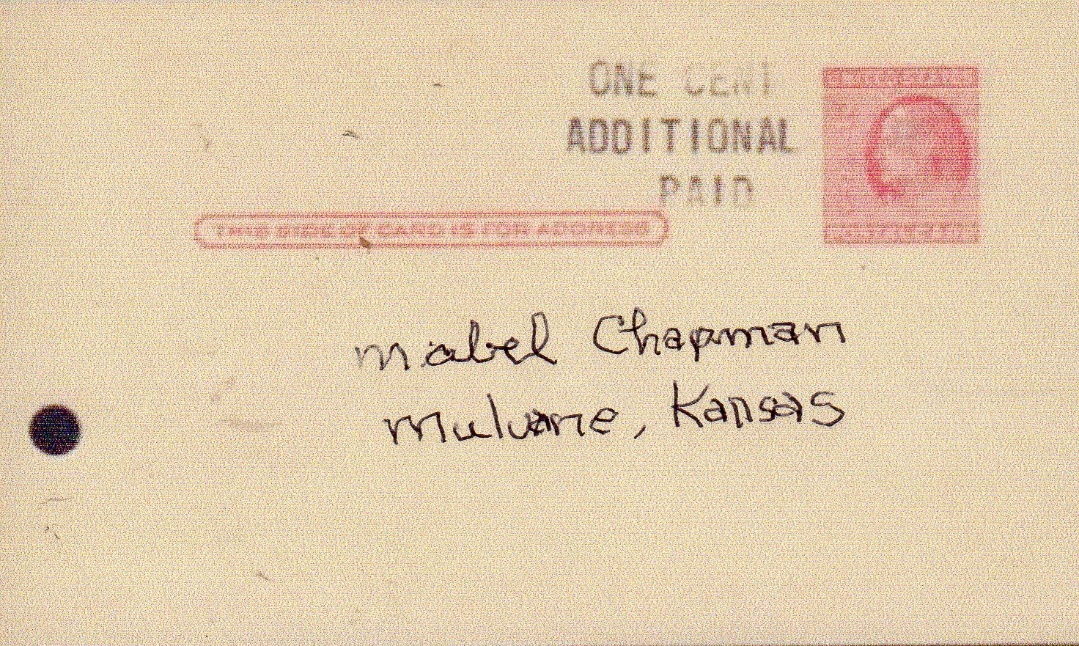
The original price of the postcard was just a penny. You could buy the card, write a message on the back and mail it; all for just one cent. The first government-produced postcard was issued on May 1, 1873. Just one month earlier, Dana’s great-grandfather, David Rhodes, moved his family to a farm in Sumner County, not far from the destination of that postcard. But, by the time the above card was mailed, in 1937, the price had gone up to two pennies.
Of course, there was no social media in those days, but don’t you know that everyone in the little town of Mulvane was aware that Dana was missing and that the police and sheriff were helping Mabel find her? And there in clear sight, for everyone at the post office to read was a suggestion as to where she might be found. Did the word spread? Was there talk down at the local grocery store? Did Shirley’s girlfriends inquire? That message scrawled on the back of that little five by seven-inch piece of paper was like today’s face book. We were still involved in a financial meltdown, the great depression and not everyone had telephones. But that surely spread like a wildfire.
In 1936, less than a thousand people lived in Mulvane, so the absence of a little five-year old girl would have been big news. Being found, even bigger.
Just a little postcard. In 1954, sixteen years later, Kitty Kallen, recorded a song called “Little Things Mean a Lot”. In July of 1954, Dana, the name on that post card, had the first of her two babies, a boy. Kitty’s recording of Little Things was number one on the charts when that baby was born. Chinese folks use little chopsticks, no larger than a pencil, for eating, but they cut down twenty-million trees a year just to make them. So, little things DO mean a lot.
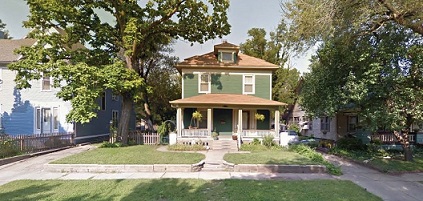 For Mabel the words, on that penny post card “If, you have a daughter named Dana, you will find her at (an address was given)”, brought an end to huge amounts of anguish. They changed the lives of Dana, and Ruth, and Carl, and Jim and hundreds of others, forever. It meant Mabel could sit in this chair nearly a quarter of a century later and Smile.
For Mabel the words, on that penny post card “If, you have a daughter named Dana, you will find her at (an address was given)”, brought an end to huge amounts of anguish. They changed the lives of Dana, and Ruth, and Carl, and Jim and hundreds of others, forever. It meant Mabel could sit in this chair nearly a quarter of a century later and Smile.
Incidentally, Kitty, whose real name was Katharine Kolinsky, died eighty years after Mabel received that postcard. She was ninety-four. She died at her home in Mexico, beautifully situated in the mountains south of Mexico City. Did we mention that when Mabel was leaving Les and that boxcar out in the field, near Wellington, Kansas and when she was trying to find Dana, the famous German Zeppelin, the Hindenburg, crashed, killing thirty-six people?
“1015 Lewellen Wichita, Kansas”
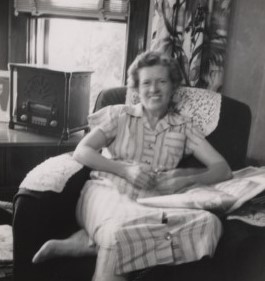
While we talk about Dana, later in our story, we will also become aware of how difficult it was for her to become of any interest at all to the general public. Mother and daughter would eventually find happiness through marriages that took place in this house in Wichita at 1015 North Lewellen, in Wichita, Kansas, where Jim and Dana did most of their courting and, where, Dana, before their marriage, was learning to drive, crushed a fender on their 1939 Chevrolet. The same Chevy they drove to Guymon, Oklahoma where Jim had his first job in radio broadcasting.
Life still had its challenges for Dana and Mabel, but finding Dana, was not one of them.
 Mabel and Dana would spend valuable time together the rest of their lives, Mabel as a grandmother and Dana as the mother of two of her grandchildren, as they enjoyed the beauty of what Leander had begun, oh so many years earlier, as Mabel watched the Moon rise, sitting by the Lake. They had paid the high price to be two of the first “LADIES OF SETTERS LAKE.”
Mabel and Dana would spend valuable time together the rest of their lives, Mabel as a grandmother and Dana as the mother of two of her grandchildren, as they enjoyed the beauty of what Leander had begun, oh so many years earlier, as Mabel watched the Moon rise, sitting by the Lake. They had paid the high price to be two of the first “LADIES OF SETTERS LAKE.”